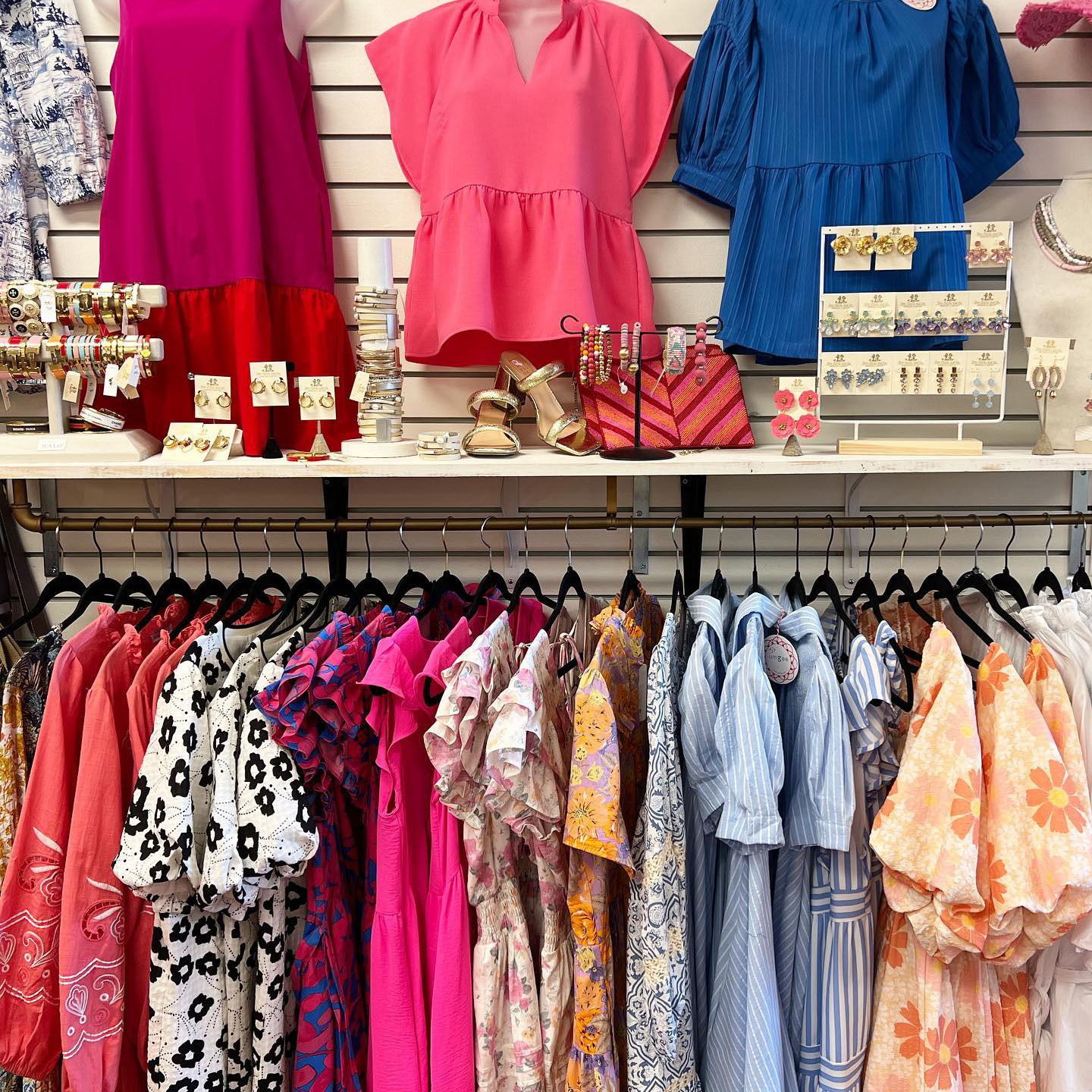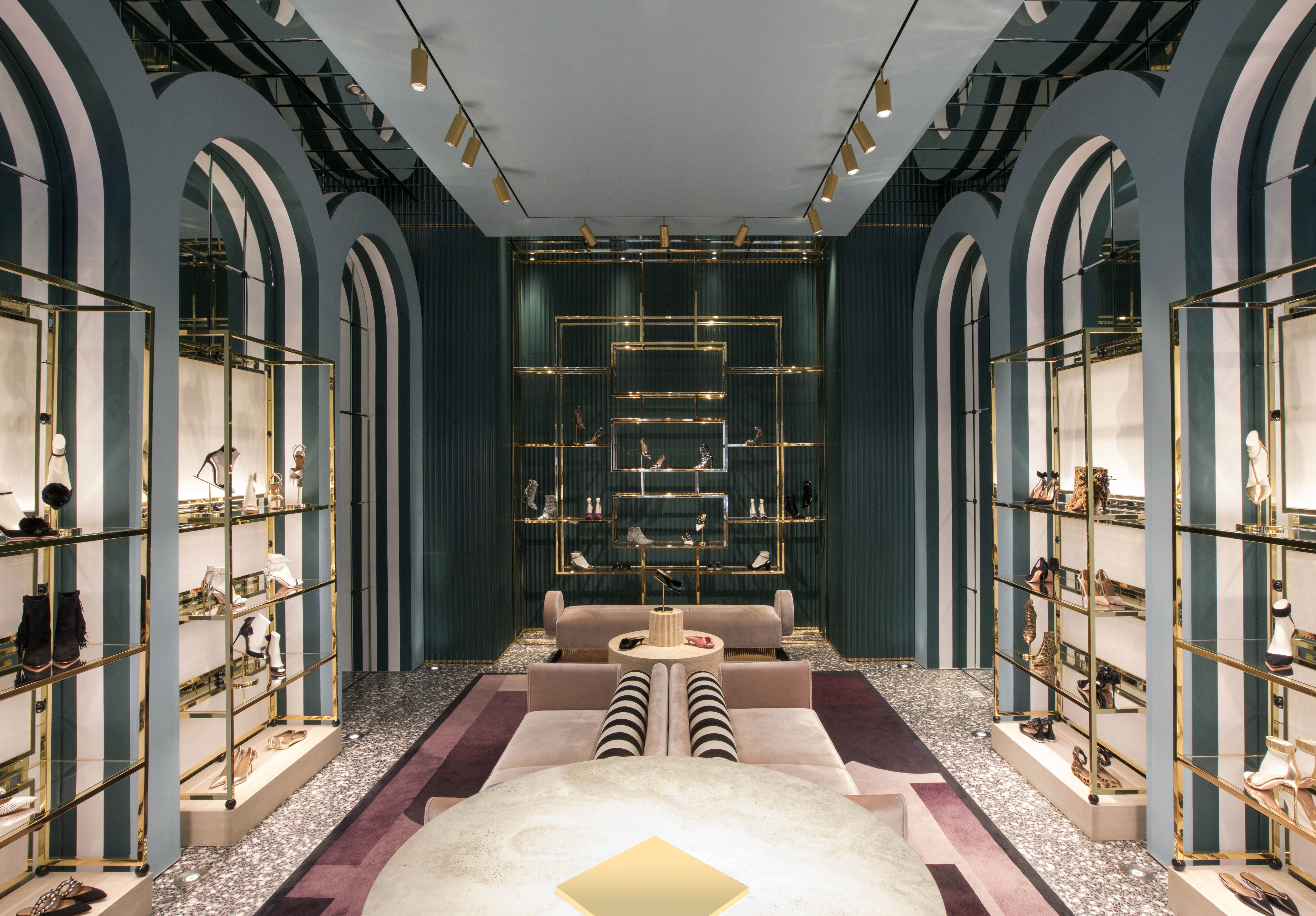The Surge of Online Purchasing: Searching For Boutique Fashion at Your Fingertips
The Surge of Online Purchasing: Searching For Boutique Fashion at Your Fingertips
Blog Article
Exploring the Evolution and Effect of Clothes on Modern Style Trends
The evolution of apparel has considerably influenced modern-day fashion fads, combining historic precedents with innovative developments. Famous numbers like Coco Chanel and Yves Saint Laurent changed the fashion sector by presenting ideas that focus on comfort and ease of access, which proceed to reverberate today.
Historic Fashion Influencers
In the tapestry of style history, certain numbers have actually left an enduring mark, forming the patterns and designs that define whole eras. Coco Chanel, a revolutionary designer, redefined females's fashion by presenting comfy, stylish apparel that departed from limiting bodices. Her renowned Chanel match and little black dress have come to be timeless staples in closets worldwide. Christian Dior's post-war "New Look" in 1947, with its celebration of womanhood with complete skirts and cinched waists, marked a return to opulence and has actually proceeded to affect developers.
Elsa Schiaparelli is another pivotal figure, renowned for her avant-garde designs that integrated surrealist art, working together with Salvador Dalí to produce wayward pieces that challenged conventional visual appeals. Her innovative use color and bold patterns reverberates in modern style. Yves Saint Laurent, meanwhile, democratized haute couture with prêt-à-porter collections, bringing runway styles to the masses and setting a criterion for modern-day ready-to-wear lines.
These dreamers, to name a few, not just revolutionized style in their times but also established sustaining patterns that resonate in today's garment industry, offering a foundation whereupon contemporary designers remain to innovate and develop. Their legacies emphasize the importance of creative thinking and bold in vogue's ever-evolving story.
Technological Developments in vogue
Among the vibrant landscape of the apparel industry, technical developments stand at the center of innovation, improving how developers produce and customers engage with style. The assimilation of 3D printing has actually transformed layout processes, enabling developers to try out intricate structures and sustainable products that were previously impossible. This innovation promotes fast prototyping, lowering waste and speeding up manufacturing times.

Smart textiles, installing innovation into textiles, are additionally changing the industry. Technologies like self-cleaning and temperature-regulating textiles provide enhanced capability and comfort. Wearable innovation, integrating features like fitness monitoring and communication, includes a brand-new dimension to style, merging visual appeals with functionality.
Social Shifts and Style
As technological developments remain to improve the garment industry, social changes are similarly significant, redefining design and customer choices. In current years, the surge of social media platforms has actually increased the circulation of international style patterns, permitting diverse social influences to exist together and assemble. This digital interconnectivity has helped with the rapid exchange of concepts, causing a much more comprehensive and eclectic interpretation of design that shows the diverse nature of modern culture.
Social understanding and appreciation have prompted developers to draw ideas from a more comprehensive range of ethnic and historical contexts, incorporating typical themes with contemporary appearances. This combination has caused fashion that reverberates with a bigger audience, advertising a feeling of identity and belonging throughout different demographics. In addition, the boosting demand for customization has driven brand names to offer personalized options, making it possible for consumers to share individuality while mirroring their cultural heritage.
In addition, changing societal worths have actually impacted style, with inclusivity and diversity ending up being main themes. The sector has begun to welcome models and influencers of different body types, ethnic cultures, and gender identifications, challenging traditional appeal standards. This improvement underscores the power of cultural changes fit the future of fashion, as style ends up being a more authentic expression browse around here of individual and collective identification.
Sustainability and Modern Layout
While the style market continues to develop, the important for sustainability has come to be significantly immediate, influencing modern design methods. The surge of slow-moving style, which emphasizes quality over amount, motivates consumers to spend in classic items rather than short-term patterns.
Moreover, contemporary layout is defined by its development in minimizing waste and advertising circularity. Techniques such as zero-waste pattern cutting and 3D knitting are acquiring traction, permitting developers to create garments with marginal material wastefulness. Additionally, brands are embracing clear supply chains, making sure responsibility and cultivating consumer trust. you could try this out This method not only alleviates environmental impact but additionally boosts the social obligation of fashion houses.

Future Trends in vogue

Sustainability will certainly remain to be a driving pressure in shaping future style patterns. The sector is progressively taking on environment-friendly materials and ethical manufacturing methods, reacting to a growing consumer need for responsible methods. Developments such as bio-fabricated products and closed-loop recycling systems are set to redefine how apparel is produced and taken in, reducing environmental influence while maintaining style and top quality.
Cultural shifts, consisting of the surge of inclusivity and diversity, will additionally play a crucial function. As culture ends up being useful link extra familiar with social problems, style is anticipated to become a platform for expression and adjustment. Designers will likely concentrate on developing collections that show a more comprehensive variety of experiences and identifications, promoting depiction and ease of access.
Final Thought
The advancement of clothing considerably affects contemporary style fads, where historic impacts merge with modern layouts. Key figures like Coco Chanel and Yves Saint Laurent have redefined style, while technological advancements such as 3D printing and wise fabrics expand innovative opportunities. Social changes in the direction of inclusivity and sustainability force brand names to welcome and embrace honest methods diversity. This continuous evolution underscores style's duty as a mirror to social values and technological development, suggesting a future rich with innovation and inclusivity.
The development of clothing has actually substantially influenced modern-day fashion fads, merging historic precedents with sophisticated technologies.In the middle of the vibrant landscape of the fashion sector, technological improvements stand at the forefront of innovation, improving how designers develop and consumers involve with fashion.While the fashion industry continues to evolve, the important for sustainability has actually become progressively immediate, influencing modern-day design methods. As sustainability comes to be embedded in contemporary layout, it paves the method for an extra responsible and mindful style sector.
The evolution of garments significantly impacts contemporary style trends, where historical impacts combine with contemporary styles.
Report this page